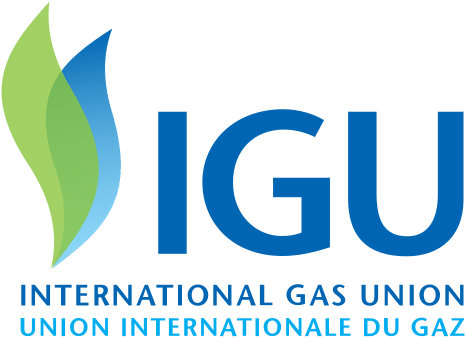The IGU Council week in Amsterdam, the Netherlands, 18-21 October, offered three workshops to the delegates. The first was the traditional host country gas industry workshop, where the gas industry of the host country provides the latest industry developments. On the panel was Gertjan Lankhorst, CEO of GasTerra, and until recently, President of the Dutch Gas Association and IGU Regional Coordinator for Europe; Thijs Starink, Director Asset Management at the Dutch company EBN; and Coby van der Linde, Head of Clingendael International Energy Programme and IGU Wise Person.
The Dutch Gas Industry workshop presented the case that gas continues to have a strong role in the Netherlands, despite declines over the last five years. Currently, gas shares 39% of the primary energy consumption, down from 50 % recently, according to Gertjan Lankhorst. The decline is attributable to several factors including, mild winters; an economy that is still recovering from the 2008 crisis, and in coal’s marginal cost competitive advantage over gas in power production.
Today, the Dutch gas market is an intersection for supplies to the whole European market. Over the past decade this has happened through deliberate policies. Natural gas can access the country from all directions and from all over the world. The Netherlands exports gas to other European countries and also reimports from Germany, from Belgium and LNG from other countries through the Rotterdam port.
As in many other countries, the Dutch gas industry struggles with the image of gas. This was raised as a challenge by all three speakers of the panel. Several developments have contributed to this: problems with Russian supplies to Europe, although the Netherlands is not too dependent on Russian gas; the US shale gas production which is seen as harmful to the environment; and the simple fact that gas is a fossil fuel, something which is often brought against the industry.
In the Netherlands, earthquakes in the gas producing region, Gröningen, adds to this and has also influenced the way people look at natural gas. The considerable damage that the earthquakes caused on houses has not helped make the image of gas any better.
In this environment it is no longer enough to insist on that gas is the cleanest fossil fuel, and the industry has started to talk about “Gas by Design”. Given this, the focus is that gas has to play a role where the most sustainable alternatives are not yet available and where gas delivers the greatest contribution to society.
As a result, the industry has taken on a more modest role, said Lankhorst. The key to credibility is to take a position that makes clear that you understand what the demands of society are, and what the necessities are to reach the climate change targets. Talking about gas by design, will hopefully address the systemic issues in the country, said Coby van der Linde. There is a need to shift the focus of the energy debates from electricity to the whole energy system. In this gas has a central role to play.
See the presentation of Gertjan Lankhorst.
To read about the other workshops of the IGU Council week, 18-21 October, please follow the links below:
IGU Council Workshop: Measure, Document, and Reduce – the Gas Industry´s Commitment to Managing the Methane Challenge
IGU Diplomatic Gas Forum held in Amsterdam, the Netherlands
